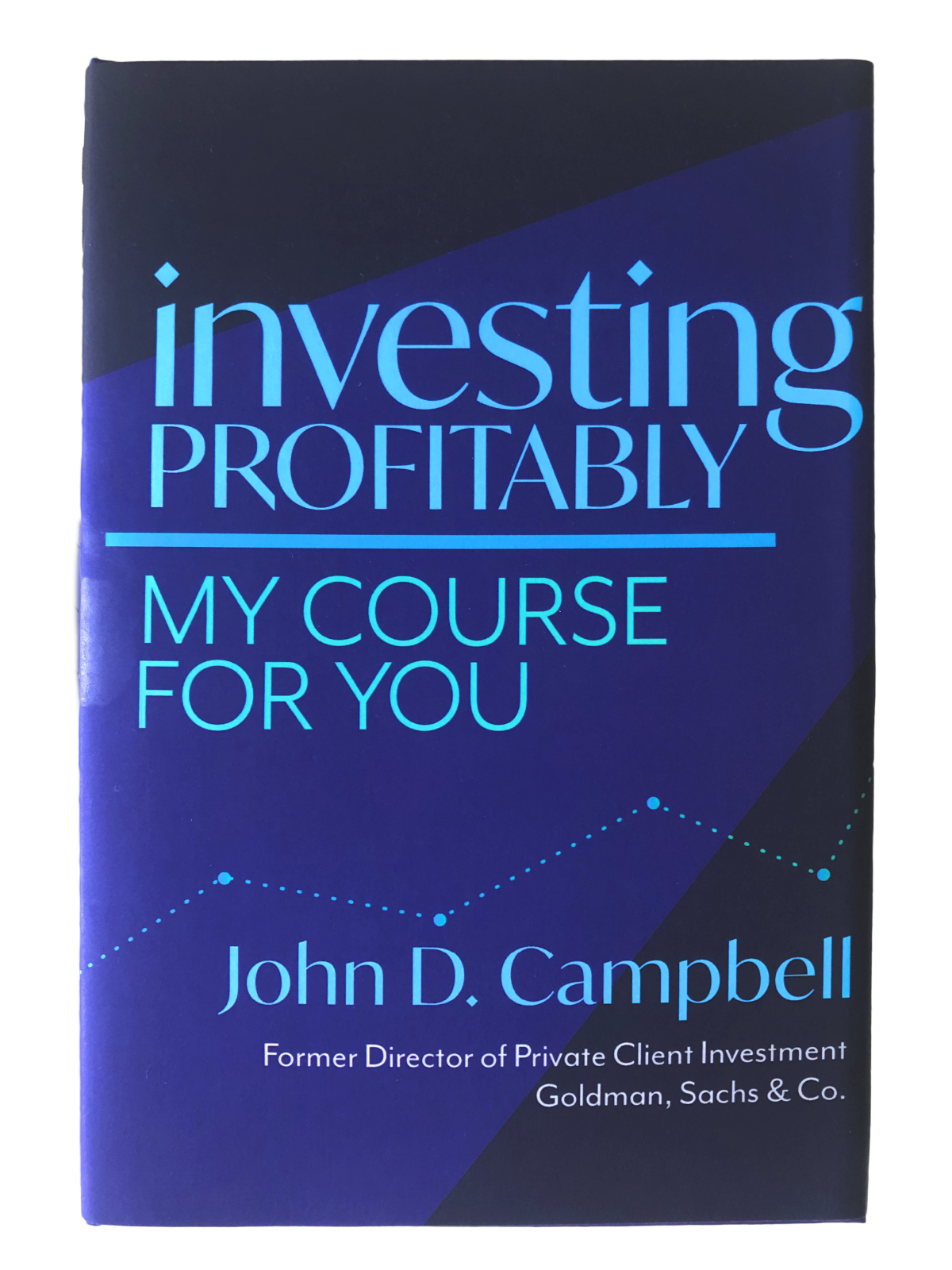
Investing
Lessons
To invest profitably, you must have a teacher. So, I encourage individuals, parents, grandparents, and friends to use this book—you do not need more—to teach and learn. Plan to discuss a few topics and the Portfolio each time. Sessions with my grandchildren last 25-30 minutes.
The following 14 lessons refer to the applicable pages in Investing Profitably. To create interest and curiosity, be flexible about the topics and material. If someone wants to pursue an idea, stay with it. The penny story excited my 6 and 8 year-old grandsons for 20 minutes. You certainly don’t need to cover every topic. Focus on the major elements you want to teach them so that they will be able to invest profitably in the Recommended Portfolio.
Lesson 2:
Compounding and Tax-Deferred Compounding
-
Explain Table 1, the penny story. Page 14.
-
Explain Table 2, $10,000 invested at different ages. Page 16
-
Explain Table 3, $10,000 that compounds versus annual increases. Page 17.
-
Explain what is the optimal policy. Page 17.
-
Explain why you will not outperform the market (S&P 500). Page 18.
-
Review the Portfolio, calculate change since inception. Make other observations.
Lesson 3:
Recommended Portfolios
-
Explain Table 14, page 115, or Table 15, page 124.
-
Explain the portfolio and investment policies. Page 116.
-
Explain the differences between the Portfolios and Vanguard’s recommendations. Page 121.
-
Explain Table 16, the estimated total rates of return. Page 125. This is especially important for determining one’s asset allocation and tolerance for volatility
-
Explain Table 17, $10,000 invested for 35 years at compound annual rates 5%, 6%, and 7%.
-
Study the text on page 126.
-
Review the Portfolio, calculate change since inception. Make other observations.
Lesson 4:
The Stock Market: Things You Need to Know
-
Explain total rates of return. Page 77, elements 1-6.
-
Explain Table 10, total rates of return, stocks, bonds, and cash: nominal and real. Page 78.
-
Explain volatility. Pages 79 and 80.
-
Explain how to convert an unrealized loss into a gain. Page 51.
-
Explain how risk and volatility differ. Page 51.
-
Explain how to evaluate your tolerance for risk and volatility. Page 54.
-
Review the final paragraph, Page 56.
-
Explain why to reinvest dividends. Page 80.
-
Discuss August 13, 1982; October 19, 1987; and February-May 2020, and the related lessons. Pages 83 and 134, paragraph three.
-
Discuss valuation. Page 88.
-
Explain behavioral bias. Page 90.
-
Review the Portfolio, calculate change since inception. Make other observations.
Lesson 5:
Personal Investment Plan (Part I)
-
Discuss saving to invest. Page 22
-
Discuss how to save. Page 23.
-
Discuss the three-step plan. Page 24.
-
Explain the Rule of 72, time and rates. Page 31.
-
Review Portfolio, calculate change since inception. Make other observations.
Lesson 6:
Personal Investment Plan (Part II)
-
Discuss saving to invest. Page 22
-
Discuss how to save. Page 23.
-
Discuss the three-step plan. Page 24.
-
Explain the Rule of 72, time and rates. Page 31.
-
Review Portfolio, calculate change since inception. Make other observations.
Lesson 7:
Asset Allocation (Part I)
-
Discuss saving to invest. Page 22
-
Discuss how to save. Page 23.
-
Discuss the three-step plan. Page 24.
-
Explain the Rule of 72, time and rates. Page 31.
-
Review Portfolio, calculate change since inception. Make other observations.
Lesson 8:
Asset Allocation (Part II)
-
Discuss the criteria to determine an investor’s asset allocation. Pages 67.
-
Why might you not want to rebalance always? pages 68-71
-
Discuss why market timing is speculative. Page 71.
-
Review the summary. Page 73.
-
Review Portfolio: Calculate change since inception. Make other observations.
Lesson 9:
Bear Markets
-
Discuss the criteria to determine an investor’s asset allocation. Pages 67.
-
Why might you not want to rebalance always? pages 68-71
-
Discuss why market timing is speculative. Page 71.
-
Review the summary. Page 73.
-
Review Portfolio: Calculate change since inception. Make other observations.
Lesson 10:
Diminishing Your Fear Of Investing
-
Discuss the criteria to determine an investor’s asset allocation. Pages 67.
-
Why might you not want to rebalance always? pages 68-71
-
Discuss why market timing is speculative. Page 71.
-
Review the summary. Page 73.
-
Review Portfolio: Calculate change since inception. Make other observations.
Lesson 11:
Forecasts
-
Explain why stock market forecasts are the least valuable thing to heed. Page 99.
-
Review the two methodologies underlying a ten-year expectation. Pages 101.
-
Discuss the paragraph entitled In summary.. Page 105.
-
Discuss risks and concerns. Page 105.
-
Review the summary. Page 113.
Lesson 12:
Investing With Vanguard
-
Discuss why the author decided to invest through Vanguard after retiring. Page 127. Today this strategy can be duplicated at other firms, such as Fidelity Investments.
-
Discuss why an investor should always review their statements. Page 129.
-
Review the Summary and clarify any questions. Page 131.
Lesson 13:
Investing – Final Thoughts
-
Discuss your thoughts about the author’s investing lessons with his grandchildren. Page 134.
Lesson 14:
Investing – Final Thoughts
-
-Discuss your thoughts about the author’s investing lessons with his grandchildren. Page 134.
Lesson 1:
Investing
-
Reasons to invest. Page 11.
-
Understanding capitalism. Pages 12-14
-
What is a share of stock? Page 12.
-
What is a bond? Page
-
Cash investments include money market funds and Treasury Bills. Page
-
Introduce the Recommended Portfolio. Tables 14, page 114, or Table 15, page 123, or a comparable portfolio of another firm.
-
Highlight the S&P 500 (30-50% of Portfolio). Pages 35 and 122.
